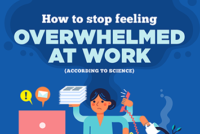Healthy Teams Don’t Happen by Accident
After a uniquely challenging and disruptive year, many employees are struggling. In January, an employee trends study found that 34% of respondents reported feeling burned out, a 7% year-over-year increase. What’s more, the latest Household Pulse Survey from the Centers for Disease Control and Prevention (CDC) discovered that 37% of survey respondents feel anxious or […]










